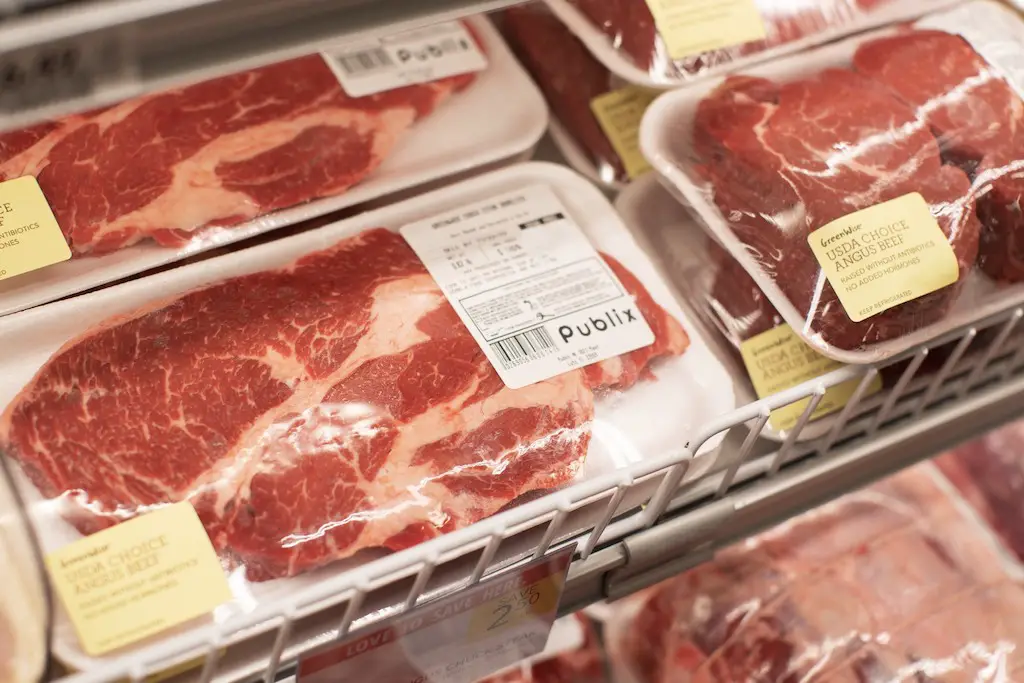As the largest employee-owned grocery chain in the United States, Publix is known for their commitment to quality, especially when it comes to fresh meat. When you grab a pack of ground beef or ribeyes from the butcher case at your local Publix, have you ever wondered exactly where that beef comes from?
In this article, we’ll explore Publix’s beef supply chain, tracing the origins of their high-quality meat from pasture to packaging. Read on to learn about their network of providers, safety protocols, and focus on sustainable sourcing practices
An Overview of Publix’s Beef Sourcing
Publix sources their beef products through numerous U.S. beef suppliers, including major meat processing companies like Tyson Foods, Cargill, National Beef, and JBS. This diversified supplier network allows them to work with providers across top beef producing states.
Their primary distribution centers are located in Lakeland, Florida and Lawrenceville, Georgia. From these hubs, beef gets distributed to their 1,281+ stores across seven southeastern states. Publix employs food safety specialists to inspect suppliers and products at all levels.
Key Requirements for Publix’s Beef Suppliers
While not all of Publix’s standards are publicly listed, they do hold their beef suppliers to rigorous criteria:
-
USDA Grades – Only USDA Choice and Select beef grades are sold at Publix to ensure quality. USDA Prime grade is reserved for their premium Provenir line.
-
Traceability – Suppliers must have end-to-end traceability from birth farm through processing.
-
Testing – Each lot of beef is tested for pathogens and quality certification.
-
Feed & Medications – Suppliers minimize use of hormones antibiotics, and animal by-products in feed per Publix’s specifications.
-
Handling – Publix suppliers must adhere to ethical animal handling practices during transport and processing.
-
Sustainability – Suppliers who engage in environmental stewardship are preferred.
Why Choose Fresh Over Frozen?
Publix traditionally sells fresh, never frozen beef in their butcher cases. Frozen beef must be labeled as such.
They focus on fresh beef because many customers perceive it as higher quality. The texture and color of fresh beef is often more appealing. Fresh beef’s shorter supply chain also minimizes opportunities for damage.
However, freezing can be useful for aspects like storage and food safety. Ultimately Publix lets customers choose between fresh or frozen based on their needs and preferences.
Grass-Fed vs Grain-Fed Beef at Publix
You may notice grass-fed beef sold alongside conventional grain-fed beef at Publix. This offers customers options based on their budget, priorities, and taste preferences.
Their conventional beef comes from cattle fed a controlled, grain-based diet for more consistent marbling. Grass-fed beef must meet standards for predominantly grass-based diets and come from sustainable ranching practices.
Both have advantages, but grass-fed beef does align closer with Publix’s expanding focus on regenerative agriculture. Look for their GreenWise grass-fed beef line.
Publix’s Growing Emphasis on Sustainability
In recent years, Publix has put more emphasis on partnering with suppliers that use regenerative techniques to improve soil health, water conservation, biodiversity, and carbon capture.
Their ambition is to expand regeneratively sourced beef to make up 15% of sales by 2026, and 50% by 2030. This will include beef sourced from farms using practices like rotational grazing, cover crops, and reduced tillage.
Through pilot projects with vendors like Tallgrass Beef Company and White Oak Pastures, Publix is taking steps to increase transparency around sustainability in their beef supply chain.
Real Insights on Publix’s Beef Sourcing Practices
While Publix maintains high standards for their beef suppliers, they have faced some criticism over sourcing practices in the past. Here are a few realities to consider:
-
Supplier names and locations are not fully disclosed, reducing transparency.
-
Most beef still comes from large conventional feedlots, not small family farms.
-
Grass-fed, regeneratively sourced beef makes up a very small percentage of current sales.
-
Standards like “hormone-free” are loosely defined and not third-party verified.
-
Some have called for Publix to implement more stringent animal welfare policies.
The Bottom Line on Publix’s Beef
When it comes down to it, Publix’s commitment to quality, food safety, customer service, and now sustainability make them a go-to grocery chain for delicious, wholesome beef.
They may not be perfect, but Publix is taking steps to improve traceability, animal welfare, and environmental stewardship in their beef supply chain. As consumer awareness grows, Publix will need to continue progressing to exceed expectations.
So next time you bite into a Publix burger or sear up their ribeyes for dinner, you can feel good supporting a retailer that’s working hard to get better, not just bigger. That’s the Publix promise.

Meet Your Publix Meat Department Associate
FAQ
Does Publix have high quality meat?
Where does Publix GreenWise beef come from?
Is Publix meat ethically sourced?
Does Publix have USDA Prime beef?
